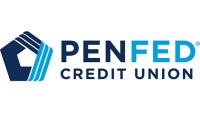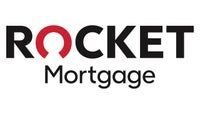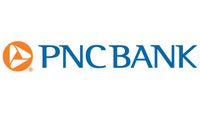Best mortgage refinance lenders in 2024

The Bankrate promise
At Bankrate we strive to help you make smarter financial decisions. While we adhere to strict , this post may contain references to products from our partners. Here's an explanation for .
Although refinance interest rates aren’t as favorable as they had been during the pandemic, refinancing might make sense today for some homeowners who want to pull out cash. We’ve made it easier for you to compare refinance offers by reviewing dozens of mortgage lenders in several key areas. Based on those benchmarks, here is our guide to the best mortgage refinance lenders in 2024.
Bankrate’s picks for best mortgage refinance lenders
| Mortgage refinance lenders | Credit requirements | Bankrate Score |
|---|---|---|
| Better | 620 for conventional loans, 580 for FHA loans, 620 for VA loans | 4.6 |
| Old National Bank | 620 for conventional loans, 600 for FHA loans, 620 for VA loans | 4.6 |
| U.S. Bank | 620 for conventional loans, 740 for jumbo loans | 4.8 |
| PenFed Credit Union | 650 for conventional loans, 700 for jumbo loans, 620 for FHA loans | 4.7 |
| Rocket Mortgage | 620 for conventional loans, 680 for jumbo loans, 580 for FHA and VA loans | 4.6 |
| Citizens Bank | 620 for conventional loans | 4.5 |
| PNC Bank | 620 for conventional, jumbo and FHA loans, 640 for USDA loans | 4.5 |

Better
-
- Availability: All U.S. states
- Loans offered: Conventional, FHA, VA
- Credit requirements: 620 for conventional loans, 580 for FHA loans, 620 for VA loans
- Where to find: Online

Old National Bank
-
- Availability: All U.S. states
- Loans offered: Conventional, jumbo, FHA, VA, USDA
- Credit requirements: 620 for conventional loans, 600 for FHA loans, 620 for VA loans
- Where to find: Branch locations and online

U.S. Bank
-
- Availability: All U.S. states
- Loans offered: Conventional, jumbo, FHA, VA, USDA
- Credit requirements: 620 for conventional loans, 740 for jumbo loans
- Where to find: Branch locations and online

PenFed Credit Union
-
- Availability: All U.S. states
- Loans offered: Conventional, jumbo, FHA, VA
- Credit requirements: 650 for conventional loans, 700 for jumbo loans, 620 for FHA loans
- Where to find: Branch locations and online

Rocket Mortgage
-
- Availability: All U.S. states
- Loans offered: Conventional, jumbo, FHA, VA
- Credit requirements: 620 for conventional loans, 680 for jumbo loans, 580 for FHA and VA loans
- Where to find: Online

Citizens Bank
-
- Availability: All U.S. states
- Loans offered: Conventional, jumbo, FHA, VA
- Credit requirements: 620 for conventional loans
- Where to find: Branch locations and online

PNC Bank
-
- Availability: All U.S. states
- Loans offered: Conventional, jumbo, FHA, VA, USDA
- Credit requirements: 620 for conventional, jumbo and FHA loans, 640 for USDA loans
- Where to find: Branch locations and online
How to choose the best refinance lender for you
To refinance your mortgage, you don’t need to go back to the bank or lender you initially worked with. It’s best to compare interest rates and closing costs from at least three refinance lenders, considering each lender’s credit score, equity and other requirements and how those might apply to your circumstances. It’s also a good idea to check out customer reviews of mortgage lenders to help inform your decision.
As you compare lenders, you might come across some that charge a flat fee for refinances. This could translate to more savings, depending on how much you’re borrowing and whether there are other fees.
Other lenders offer so-called “no closing cost” refinances that allow you to finance these fees with the new loan instead of paying them upfront. While this can be a nice perk if you don’t have the savings, you’ll pay a higher interest rate in exchange for it.
Steer clear of any lenders that push refinancing even if it isn’t financially advantageous for you. A reputable loan officer should help you do the math and decide whether refinancing makes sense for your situation.
Additional mortgage refinance resources
- Refinance breakeven calculator
- Reasons to refinance your mortgage
- How much does it cost to refinance?
-
To determine the best mortgage refinance lenders, Bankrate periodically evaluates more than 80 lenders for factors relating to affordability, availability and borrower experience, assigning each a Bankrate Score out of five stars. The best mortgage refinance lenders generally have a Bankrate Score of 4.5 stars or higher. Learn more about our methodology.
Related Articles





